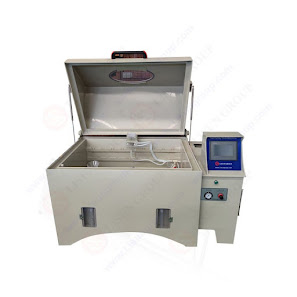What are the principles of salt spray test?

The salt spray test is a sort of environmental testing that is used to assess the performance and durability of items in severe coastal conditions. The test is named after the corrosive salt spray that is subjected to the products. The test recreates the damaging effects of salt spray, salt fog, and other corrosive factors that are typical in coastal regions. The salt spray test is based on the premise of exposing test materials to a controlled environment that replicates the variables that are encountered in a coastal area. The conditions that are simulated include wind, rain, and temperature extremes. The purpose of the test chamber is to produce and maintain a controlled environment via careful regulation of temperature and humidity in order to guarantee the reliability and precision of the findings of the tests. The salt spray is produced by a nebulizer or spray nozzle system, which atomizes the salt water and forms a fine mist that is sprayed over the test samples. This fine m...
.jpg)
.jpg)
.jpg)
.jpg)
.jpg)
.jpg)